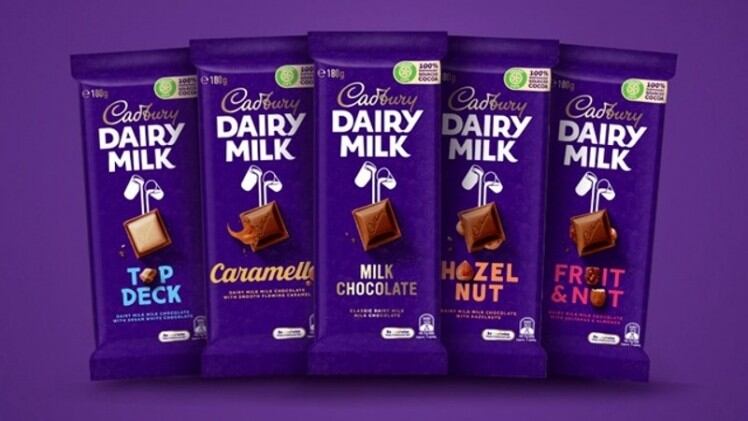Mondelez operates in more than 150 countries, netting revenues of approximately USD$29bn via brands such as Oreo, Cadbury Dairy Milk and Toblerone.
And while the chocolate and biscuit market in Asia, Middle East and Africa is already 1.4 times the size of the North American sector, population growth, income rises and digital connectivity are tipped to help this further soar.
Mondelez Chairman and CEO Dirk Van de Put said: “AMEA is a very exciting growth engine for our company today and in the future.
“To find the necessary sources of growth, we have shifted the organisation to be closer to the consumer, thereby allowing us to better tailor our local portfolio and marketing with greater speed and agility,” he told the 2022 Consumer Analyst Group of New York (CAGNY) Conference.
Two key growth countries for the firm are India and China.
Indian momentum
Speaking from India capital Delhi, the Mondelez BU president for India Deepak Iyer said the country offers tremendous opportunity through its strong demographics.
India has a population of 1.3 bn people, with an almost threefold estimated GDP growth of around USD$2.7tn in 2018 to USD$6.5tn in 2030.
There is also rising affluence and strong forecasted consumption growth in rural and urban markets.
Iyer explained the plan to increase brand penetration and expand its portfolio in core snacking categories of chocolate and biscuits.
First, it wants to attract new consumers with low unit prices of packs at USD$0.07 to USD$0.15.
Second, it will promote the phenomenon of gifting during festivals and occasions to build year-round demand.
Lastly, it wants to drive the Cadbury Dairy Milk Silk product as India’s gold standard for premium chocolate.
More investments will support the premiumisation to capture the strong growth opportunity.
Iyer said biscuits have a retail sales value (RSV) of USD$5bn, with high per capita consumption thereby creating an almost universal nature in households.
As such, the revenue base of the signature snack Oreo in India would be scaled up from USD$100m by expanding their portfolios to meet key price points.
Cadbury India also wants to expand the biscuit segment by leading premium cookies and cake products using a Cadbury choco-bakery.
The next consideration would be the distribution channels, which provide significant opportunities to expand availability. One example is installing more visi-coolers due to India’s climate.
The company also plans to conquer digital commerce by maximising e-commerce sales and digital marketing.
“We have a market with significant opportunities and a strong plan to deliver sustained, low double-digit growth in India.
“This is driven by strategic initiatives in chocolates and biscuits as well as the strength of our RTM, which will increase availability across physical and digital channels,” Iyer concluded.
Growth in China
Joost Vlaanderen, the president of Mondelez’s China BU, said the country’s present attractiveness is in its large and fast-growing middle class.
China is home to the largest middle class, accounting for 40% of the past decade’s growth and forecasted to have another 200 million consumers join the class in the coming decade.
“That middle-class growth, combined with continued urbanisation, ensures significant distribution opportunities across all city tiers – from the large provincial capitals to the small towns and villages,” said Vlaanderen.
He added there was rapid growth of affluent households, while disposable incomes will also rise rapidly across rural areas. Likewise, digital connectivity continues to boom.
One success strategy is to create localised products, with Vlaanderen stating that its gum product Stride was developed from scratch in the country.
It is now the most favoured brand among the younger Gen-Z consumers with a 20% market share.
He added that route-to-market (RTM) capabilities in China must also be enhanced but tailored to the needs of different cities, areas and even digital landscapes.
“We plan to drive growth by increasing distribution through another 500,000 stores by 2025.
“To do this, we’ll leverage our RTM capability in lower-tier cities.
“We’ll use our tailored top city RTM to serve the upper-middle-class consumers, with a customised portfolio in the channels where they shop.
“We also aim to double our business in digital commerce by 2025 by closing the share gap between online and offline.
“Entry into cakes and pastries white space is the third driver of future growth. The category is large and it’s growing high single-digits,” said Vlaanderen.
Broader AMEA strategic objectives
Accordingly, Brusadelli outlined strategies to conquer the broader AMEA market.
In addition to building R&D centres in China, India, Singapore and Indonesia to align with consumer preferences, the company has also created locally adapted RTM paths to improve distribution.
Subsequently, a three-pillar strategy is applied to accelerate revenue and growth in the region, similar to how it was done in India and China: namely brand penetration and portfolio growth; better distribution; and entry in ‘white spaces’.
For example, Vlaanderen said the China BU has invested in a partnership that enabled its entrance into the “frozen-to-fresh” cake segment – a ‘white space’ it hopes to penetrate as part of its growth strategy.
Brusadelli added: “The demographics are favourable as 40% of the region will be under the age of 34 by 2030, and we know, through our insights data, that younger consumers snack more.
“A key tailwind is the explosive growth of middle-class consumers in this region. Asia will contribute about 90% of the next 2.4bn global middle-class segments”.
Mondelez’s 2021 net revenues in AMEA climbed to USD$6.5bn, with operations in 27 countries, sales in 70 markets and driven by 18,500 workers.
About 90% of AMEA revenue was derived from focus brands.
This includes two USD$1bn global brands, Oreo and Cadbury Dairy Milk, and 11 brands with revenues of more than USD$100m, such as malted beverage Bournvita and Kinh Do snacks.

